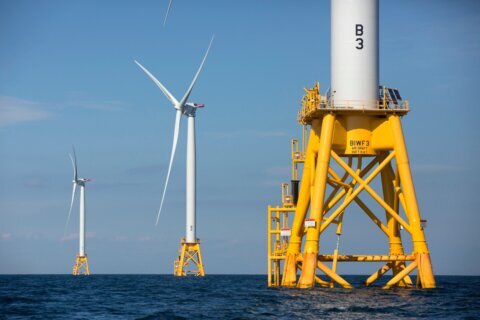Environmentalists are worried that with less tree canopy and more impervious surfaces, some parts of the D.C. area may experience severe flooding from the Chesapeake Bay as a result of climate change.
More than 3,000 square miles of the Chesapeake’s watershed — or a land area containing streams and rivers that all drain into a larger body of water — is covered by surfaces that prevent water from being absorbed into the ground, such as buildings, parking lots and driveways.
According to a Chesapeake Bay Program news release, this type of surface makes up nearly 5% of the Bay watershed’s entire land area, which totals more than 40.5 million acres.
“Paved or hardened surfaces do not allow water to pass through, meaning that water flows over the surface, picking up pollutants as it goes,” the news release said. “Stormwater runoff is one of the fastest growing sources of pollution impacting the Chesapeake Bay.”
The watershed spans more than 64,000 square miles across six states — Maryland, Virginia, West Virginia, Delaware, New York and Pennsylvania — plus the entirety of D.C. More than 18 million people live in the watershed.
This data comes from a 2017-18 study led by the Chesapeake Conservancy, University of Vermont and the U.S. Geological Survey, which analyzed land use and land cover data in part to understand the loss of tree canopy — layers of leaves and branches that cover the ground when viewed from above — across the region.
According to the news release, development is “one of the biggest threats to forest conservation.”
The study found that between 2013-14 and 2017-18, Maryland showed the greatest net loss of tree canopy across the watershed region at more than 4,500 acres, despite also reporting the most cumulative community tree planting.
Ann Jurczyk, the Virginia director of advocacy and outreach for the Chesapeake Bay Foundation, said climate change leads to extreme heat and more intense flooding — and one way to protect residents of the watershed area from such events is to invest in tree canopy.
“Extreme heat and more intense flooding are directly related to changes in climate. Tree canopy — particularly over asphalt — can help cool our streets and reduce flooding in a cost-effective way,” said Jurczyk in the news release.
She added that the Chesapeake Bay Program data can help nearby areas “review and potentially change their programs to preserve existing canopy and fill canopy gaps in an equitable manner.”









